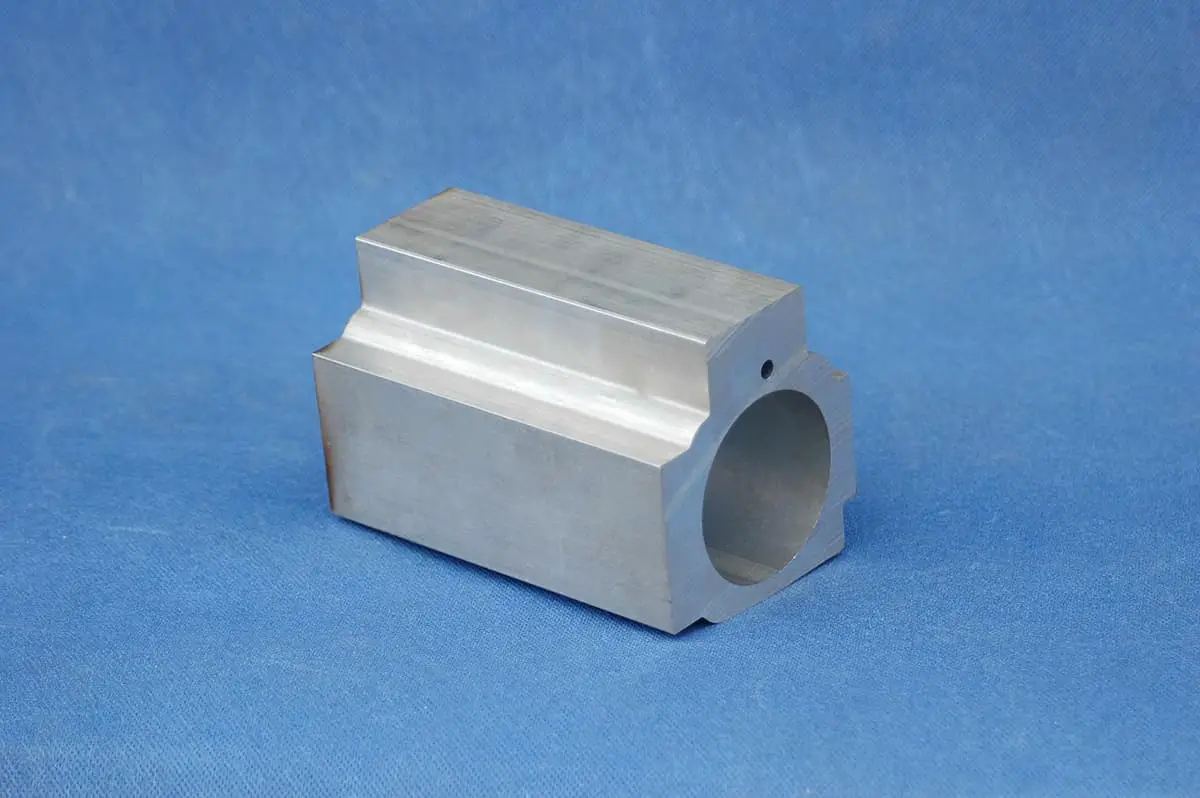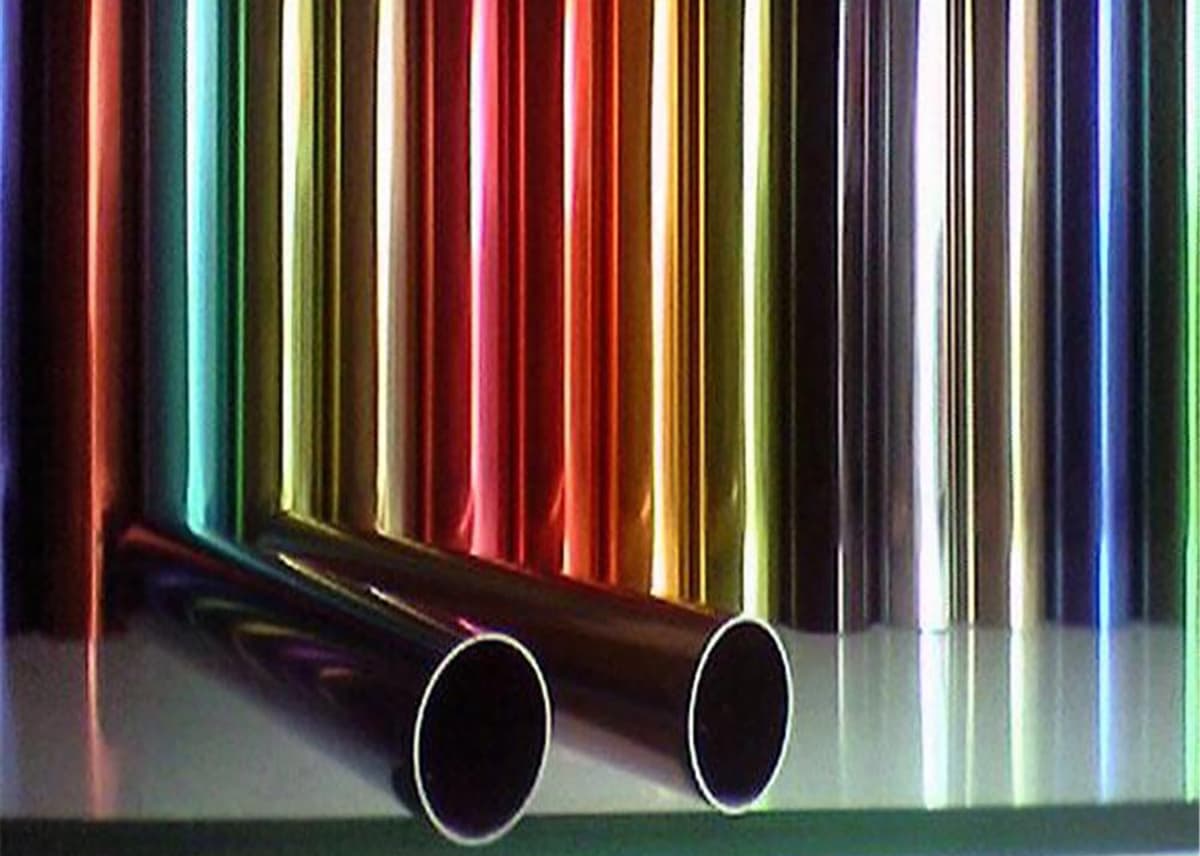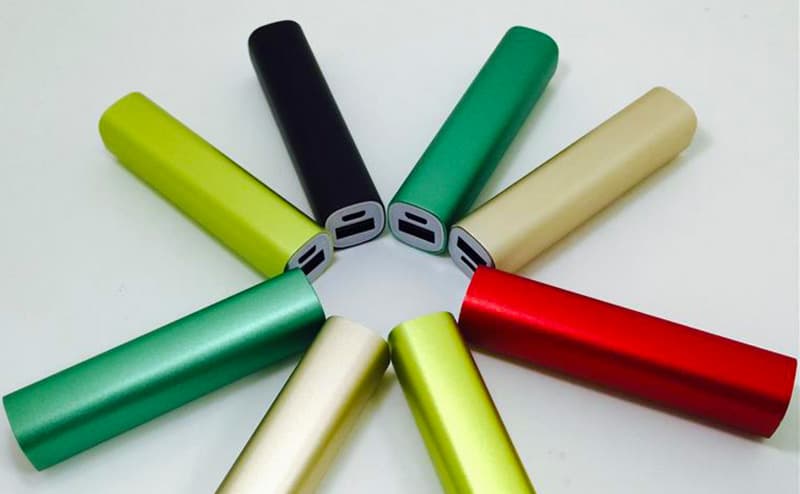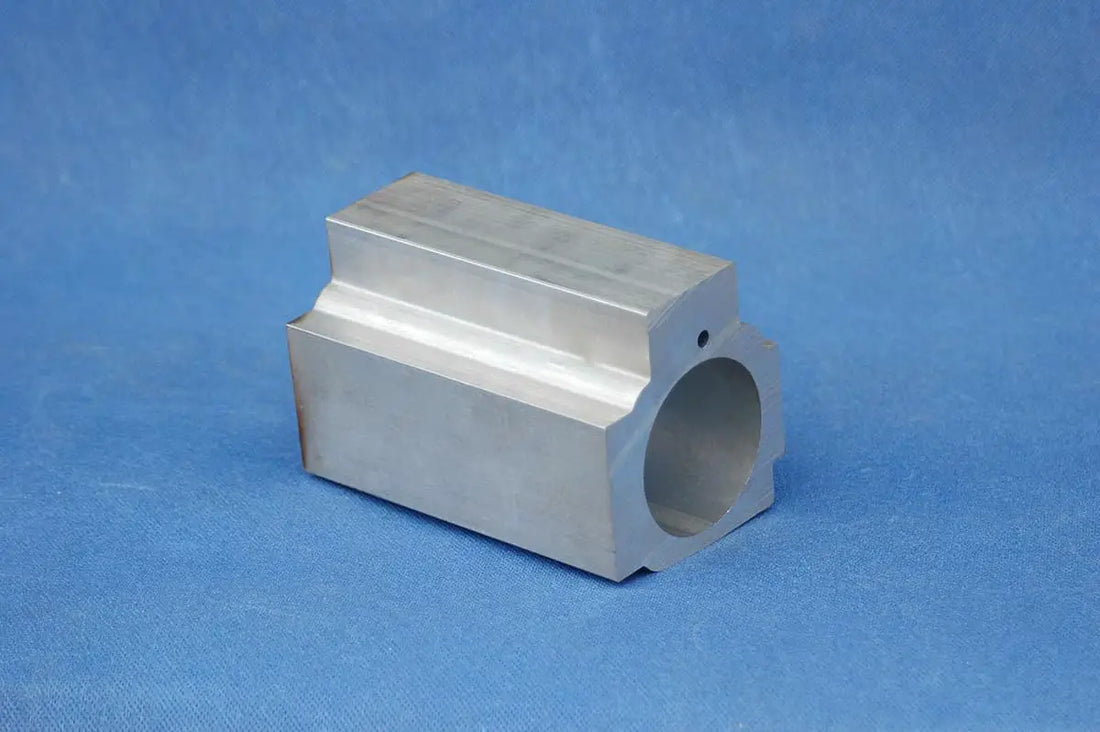Electrolysis is used to form a thin oxide film on the surface of metal or alloy parts, using the parts as anodes.
Metal oxide film changes the state and properties of the surface, such as surface coloring, better corrosion resistance, increased wear resistance and hardness, and protection of the metal surface.
For example, in aluminum anodizing, aluminum and its alloys are placed in corresponding electrolytes (such as sulfuric acid, chromic acid, oxalic acid, etc.) as anodes, and electrolysis is carried out under specific conditions and with external current applied.

The aluminum or its alloy in the anode oxidizes, forming a thin layer of aluminum oxide on the surface, 5 to 20 microns thick. Hard anodizing films can reach 60-200 microns in thickness.
After anodizing, the hardness and wear resistance of aluminum or its alloy are improved, reaching 250-500 kg/square millimeter. The hard anodizing film also has good heat resistance, with a melting point as high as 2
In practical applications, anodizing of aluminum alloys is quite common and can be used in everyday life, as this process creates a hard protective layer on the surface of aluminum parts, making it suitable for the production of kitchen utensils and other items. household items.
However, the anodization of cast aluminum presents poor results, with irregular surfaces and only black coloring. The anodization of aluminum alloy profiles is relatively better.
In recent years, China's aluminum oxidation coloring technology has developed rapidly, and many factories have adopted new process technologies and accumulated rich experience in actual production.
There are many mature and developing methods for anodizing aluminum and its alloys, from which suitable processes can be selected based on production needs.
Before selecting an oxidation process, it is important to understand the aluminum or aluminum alloy material, as the quality of the material and its composition directly affect the quality of the anodized aluminum product.
For example, if there are defects such as bubbles, scratches, peeling, roughness, etc. on the aluminum surface, they will still be visible after anodizing. The alloy composition also directly affects the appearance of the anodized surface.
For example, aluminum alloys containing 1-2% manganese become brownish-blue after oxidation, and increasing manganese content leads to a brownish-blue color transformation to dark brown.
Aluminum alloys containing 0.6-1.5% silicon turn gray after oxidation, while those containing 3-6% silicon become grayish-white. Zinc-containing alloys appear milky, while chromium-containing alloys display irregular colors ranging from golden yellow to gray, and nickel-containing alloys appear pale yellow.
Generally speaking, only aluminum alloys containing more than 5% magnesium and titanium can achieve a transparent and shiny appearance after oxidation.
After selecting suitable aluminum and aluminum alloy materials, it is necessary to consider choosing the appropriate anodizing process.
At present, sulfuric acid oxidation, oxalic acid oxidation and chromic acid oxidation are widely used in China and have been thoroughly documented in manuals and books. This article briefly presents some new processes currently being developed in China and foreign methods.

1. New processes developed in China:
(1) Rapid oxidation of AC in oxalic-methanoic acid mixture.
The use of an oxalic-methanoic acid mixture is based on the idea that methanoic acid is a strong oxidizing agent and can accelerate the dissolution of the inner layer (barrier layer and blocking layer) of the oxide film, resulting in the formation of a porous outer layer. .
This type of solution can increase conductivity (i.e., increase current density), allowing rapid formation of the oxide film. Compared to pure oxalic acid oxidation, this solution can increase productivity by 37.5% and reduce energy consumption (3.32 kWh per square meter for oxalic acid oxidation compared to 2 kWh per square meter for this process), saving 40% of electricity.
The process formulation is as follows: oxalic acid 4-5%, methanoic acid 0.55%, three-phase AC 44V, current density 2-2.5A/d㎡, temperature 30±2℃.
(2) Mixed acid oxidation.
This method was officially included in the Japanese national standard in 1976 and adopted by Kita-sei Nissho Co., Ltd. Its characteristics are rapid film formation, higher hardness, wear resistance and corrosion resistance of the film compared with conventional oxidation of sulfuric acid.
The film is silvery white and suitable for printing and coloring products. After the Chinese aluminum products industry visited Japan, this method was recommended for use in 1979.
The recommended process formulation is: H2SO4 10-20%, COOHCOOH·2H2O 1-2%, voltage 10-20 V, current density 1-3 A/d㎡, temperature 15-30℃, time 30 minutes.
(3) Ceramic oxidation.
Ceramic oxidation mainly uses chromic acid, boric acid and titanium potassium oxalate as electrolytes and is subjected to electrolytic treatment at high voltage and temperature.
The film resembles ceramic enamel, with high corrosion resistance, good wear resistance, and can be colored with organic or inorganic dyes, giving it a special shine and color. It is mainly used in aluminum pans, lighters and gold pens and is very popular among consumers.
(4) Military color oxidation.
Military color oxidation is mainly used for decoration on military aluminum products, so it requires special protective effects. The oxide film is military green, non-glossy, wear-resistant, durable and has good protective properties.
The process involves first carrying out oxalic acid oxidation to generate a golden yellow film layer and then subjecting it to anodic oxidation treatment using a solution of 20g/l potassium permanganate and 1g/l H2SO4. Shenyang Aluminum Products Factory used this process to produce water bottles and military kitchenware.
(5) Multicolor oxidation.
The already dyed, but not closed, anodic oxide layer is moistened with chromic acid or oxalic acid so that the CrO3 spreads.
The surface of the dyed product fades when it is moistened with CrO3, and the oxalic or chromic acid is washed with water in any part as needed, generally stopping the reaction with the image.
Then the second dye is applied or the cleaning, rinsing and dyeing process with CrO3 is repeated to produce patterns such as flowers and clouds as needed.
Currently, this method is widely used in products such as gold cups, water cups, tea boxes and lighters.
(6) Marble pattern dyeing process.
After the product is oxidized and dyed with the first color, it is dried and then immersed in water with grease on the surface.
When lifted or immersed, grease and water flow naturally, causing irregular stripe-like spots on the film. When the second dye is applied, the oxidized film cannot be stained where it is stained with grease, while the ungreased part is dyed with the second tone, forming an irregular marble-like pattern.
This method can be found in the article by Comrade Zhou Shouyu of Guangdong State-owned Yangjiang Knife Factory (Electroplating and Coating, 1982, Issue 2).
(7) Oxidation by chemical attack.
After mechanical polishing and degreasing, aluminum products are coated with masking agents or photosensitive materials and dried, then subjected to chemical attack (fluorine or iron salt etchants) to form concave-convex patterns.
After electrochemical polishing and anodic oxidation, the surface pattern with strong sense of the main body appears, which can be comparable to the appearance of stainless steel. It is currently used in products such as gold pens, tea boxes and canvases.
(8) Fast anodic oxidation at room temperature.
Typically, H2SO4 oxidation requires a cooling device, resulting in high energy consumption. The addition of alpha-hydroxypropionic acid and glycerol can suppress the dissolution of the oxide film, enabling oxidation at room temperature.
Compared with ordinary sulfuric acid oxidation, the film thickness can be increased twice. The recommended process formulation is:
| H 2 THEN 4 | 150~160g/l |
| CH3CH(OH)COOH | 18ml/l |
| CH2OHCHOHCH2OH | 12ml/l |
| Current density | 0.8-12 A/d㎡ |
| Voltage | 12-18V |
| Temperature | 18-22℃ |
(9) Chemical oxidation method (also known as conductive oxide film).
The corrosion resistance of the film layer is similar to that of sulfuric acid anodic oxide film. The conductive oxide film has lower contact resistance and can conduct electricity, while the H 2 THEN 4 anodic oxide film cannot conduct electricity due to its high contact resistance.
The corrosion resistance of conductive oxide film is much stronger than that of copper-plated, silver-plated or tin-plated aluminum.
The disadvantage is that tin welding cannot be performed on the film layer, only spot welding can be used. The recommended process formulation is: CrO 3 4g/l, K 4 Fe(CN)6·3H 2 O 0.5g/l, NaF 1g/l, temperature 20-40°C, time 20-60 seconds.
When selecting aluminum for anodic oxidation, the following must also be noted:
(1) The surface of the selected aluminum must be free from serious scratches, structural defects or inclusions. They will affect the appearance and corrosion resistance of the oxide film layer.
(2) Some aluminum alloys must be heat treated to reasonable specifications. The grain size has a certain impact on the structure and properties of the oxide film. The coarse grains react unevenly during oxidation, often resulting in an orange peel-like appearance. Therefore, it is generally desired for aluminum to have a fine-grain structure.

2. Introduction to new surface treatment processes abroad
In recent years, foreign countries have rapidly developed aluminum surface treatment. Old processes that once required a lot of labor, a lot of energy and a lot of resources have been reformed, and new processes and technologies have been widely applied in industrial production.
(1) High-speed anodic oxidation method.
The high-speed anodic oxidation process mainly changes the composition of the electrolyte solution and reduces the impedance of the electrolyte solution, thus allowing higher current densities for high-speed anodic oxidation.
The film forming speed of the old process using a current density of 1A/d㎡ was 0.2~0.25μ/min, while the film forming speed of this new process using the modified solution can be increased to 0 .4~0.5μ/min even with a 1A/ dm2 current density, significantly reducing processing time and improving production efficiency.
(2) Tomita style method (high speed oxidation).
The Tomita style method has a much shorter processing time than the old process and its production efficiency can be increased by more than 33%. This method is suitable not only for common anodic oxide films but also for hard oxide films.
If it is necessary to produce a hard film, a method of reducing the temperature of the solution is used. Film formation speed is generally the same as listed in the table above. The relationship between film hardness and solution temperature is as follows:
- 10℃ – 500H hardness
- 20℃ – 400H hardness
- 30℃ – 300H hardness
(3) Ruby Movie.
The process of producing a ruby film on the surface of aluminum is a new process. The color of the film can be comparable to that of artificial rubies, making it ideal for decorative purposes. It also has good corrosion resistance and wear resistance.
Different types of metal oxides in the solution can be used to produce a variety of appearances. The process first involves anodizing with 15% sulfuric acid using a current density of 1A/dm 2 for 80 minutes.
Then, the part is immersed in a (NH 4 ) 2 CrO 4 solution at different concentrations for 30 minutes at 40°C, depending on the desired color intensity, to allow the metal ions to enter the pores of the anodic oxide film.
After that, the workpiece is immersed in a solution of sodium bisulfate (1 gram molecular weight) and ammonium bisulfate (1.5 grams molecular weight) at 170 ° C with a current density of 1A/dm 2 . The resulting film is purple-red in color with a fluorescent glow, while Fe 2 (CrO 4 ) 3 or Na 2 CrO 4 solutions will produce blue films with deep purple fluorescence.
(4) Asada electrostaining.
Asada electrocoloring is a process where, after anodizing, metal cations (nickel salts, copper salts, cobalt salts, etc.) are electrolyzed at the bottom of the holes in the oxide film to produce color. This process has developed rapidly in recent years, mainly because it can obtain the bronze and black colors that are popular in the construction industry.
The colors produced are stable and weather resistant. This process can save energy compared to natural coloring methods.
Almost all aluminum architectural profiles in Japan are colored using this method.
(5) Natural coloring method.
The natural coloring method completes the coloring in an electrolysis.
There are several types of solutions used, including salicylic acid and sulfuric acid, sulfonic acid and titanium acid, and sulfonic acid and maleic acid.
Because organic acids are mainly used in the natural coloring method, the oxide film is relatively dense and has excellent light resistance, wear resistance and corrosion resistance.
However, the disadvantage of this method is that to obtain excellent colors, the material composition of aluminum alloy must be strictly controlled.
1. Anodizing with sulfuric acid.
Sulfuric acid anodizing has the following characteristics:
(1) Low solution cost, simple composition, easy operation and maintenance.
Generally, it is only necessary to dilute sulfuric acid to a certain concentration, without adding other chemical agents. It is recommended to use chemically pure sulfuric acid or industrial sulfuric acid with fewer impurities, so the cost is particularly low.
(2) High transparency of the oxide film.
Pure aluminum sulfuric acid anodized film is colorless and transparent. For aluminum alloys, as the alloying elements Si, Fe, Cu and Mn increase, the transparency decreases. Compared with other electrolytes, the color of sulfuric acid anodized film is the lightest.
(3) High coloring performance.
The sulfuric acid oxide film is transparent and the porous layer has strong adsorption and is easy to dye and color. The color is bright and not easy to fade, with a strong decorative effect.
(4) The operating conditions for sulfuric acid anodizing are:
| H 2 THEN 4 (volume) | 10%~30% |
| Temperature ℃ | 18~22 |
| Al/gL-1 | ≤20 |
| Current density/A.dm-2 | 0.6~3 |
| Time/minute | 10~60 |
2. Anodizing with oxalic acid and chromic acid.
Oxalic acid anodizing is widely used in Japan, and the characteristics of the oxide film are similar to those of sulfuric acid anodizing, with lower porosity than sulfuric acid anodizing, high corrosion resistance and hardness. The cost of oxalic acid solution and operating voltage are higher than those of sulfuric acid, and the color of the oxide film of some alloys may be darker. Both oxalic acid and sulfuric acid anodizing require a good cooling system.
The operating conditions for oxalic acid anodizing are:
| Oxalic acid (volumetric fraction) | 2%~10% |
| Temperature / ℃ | 15~35 |
| Current density / A.dm-2 | 0.5~3 |
| Voltage/V | 40~60 |
Chromic acid anodized films are particularly resistant to corrosion and are mainly used in the aerospace industry. The adhesion of chromic oxide films and paints is strong, making them suitable as a base for paints. Opaque gray chromic acid anodized film is generally not used for decorative purposes.
The operating conditions for chromic acid anodizing are:
| CrO3/gL-1 | 30~100 |
| Temperature/℃ | 40~70 |
| Current density/A.dm-2 | 0.1~3 |
| Voltage/V | 0~100 |
| Time/minute | 35~60 |
3. Hard anodizing.
At the end of World War II, in order to increase the hardness and thickness of the anodized film, the temperature of the sulfuric acid anodizing tank was reduced to 0 ℃ and the current density was increased to 2.7 ~ 4.0 A /dm2, obtaining a “hard oxide film” of 25~50μm. A hard anodized film can be obtained at 5~15°C using oxalic acid with a small amount of sulfuric acid. Some patents use optimized concentration of sulfuric acid, organic acids or other additives such as benzene hexacarboxylic acid for hard anodizing.
In Scotland, Campbell invented the use of AC-DC superimposed power supply, high-speed electrolyte flow, 0℃ and current density of 25~35A/dm2 to obtain 100μm hard anodized film.
Nowadays, pulsed current is used for hard anodizing, especially for aluminum alloys with high copper content, which are generally difficult to hard anodize. The use of pulsed current can avoid “burning”. There are also many power supplies used for hard anodizing, such as AC-DC, various frequencies of single-phase or three-phase pulse currents, reverse currents, etc.
In traditional DC hard anodizing, the current density generally cannot exceed 4.0A/dm2. For single-phase rectifier pulse power supply, the peak value of the current pulse can be very large, but maintaining the uniformity of the oxide film thickness is an important issue.

























































